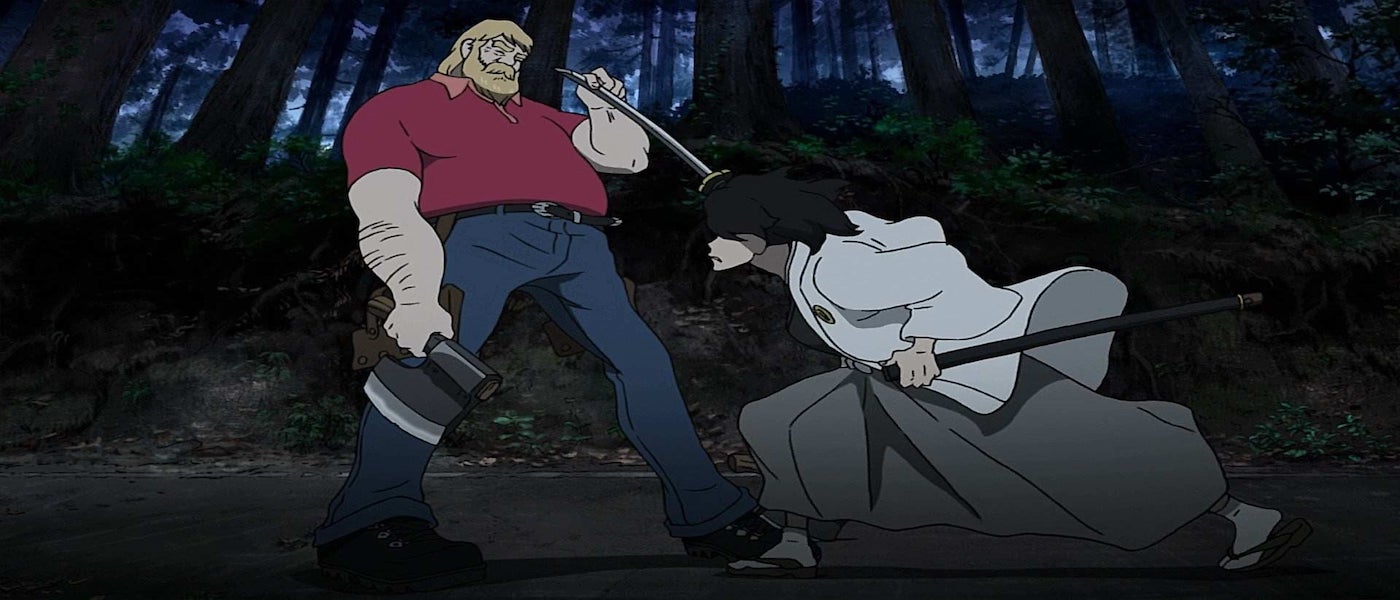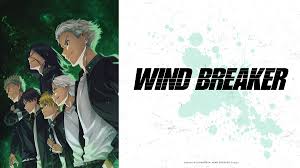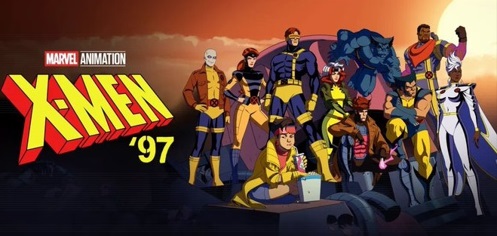English Dub Review: Lupin the Third “Goemon’s Bloodspray”
Overview:
Samurai for hire, Goemon Ishikawa, gets recruited by a boss of the yakuza, Makio Inaniwa, to act as his protection aboard his fancy cruise ship casino. This seems like a standard bodyguard gig, but an explosion takes place on the boat that throws everything into chaos (including Lupin and Fujiko’s plan to rob the casino of its winnings). When Goemon investigates the source of the explosion, he runs into the deadly Hawk, who has a vendetta to take out Lupin. While Goemon fights against Hawk and tries to eliminate this threat, Inaniwa perishes from the spreading fire, effectively ending their fight. Hawk is crushed over how he’s failed at his job, but Inaniwa’s son, Inaniwa Jr., tasks Goemon with the mission of killing Hawk to avenge his father and get closure over all of this. Goemon’s mission isn’t easy, but he repeatedly faces off against Hawk, dedicated to bringing honor to the man that he was sworn to protect.
Our Take:
The Lupin the Third spinoff series, The Woman Called Fujiko Mine looked at how the sensually conniving Fujiko first met Lupin and the rest of the series’ cast. The series was enough of a success that the creative team decided to follow it up with a triptych of films that continue the series’ story, but take a more centralized focus on the show’s supporting cast. These spin-off films dig into pivotal first encounters and origin story-like moments that surround Lupin’s trio of support, Jigen, Goemon, and Fujiko. Each of these films finds a rewarding story to tell, but Goemon’s Bloodspray may be the most satisfying and challenging of the lot.
Lupin the Third finds a lot of success in these exploratory flashbacks to the past and they even feel like a more rewarding version of the specials that Dragon Ball Z did that focused on side characters. Granted, a lot of the appeal of these character-based films is going to come down to whether you’re a fan of the focused character in question. If you really dislike Goemon, it might be easy to write off something like this, but each of these movies hopefully helps the audience gain new insight into the character. Goemon’s Bloodspray provides the character with a lot of depth and as much as this is his story, it does also feature the rest of the cast in a limited capacity. This does at times feel like more of a traditional entry of the series in many ways. It spreads its focus just enough while still making sure that Goemon remains the centerpiece.
There are a number of directions that a Goemon origin story could go, but thankfully Goemon’s Bloodspray embraces a traditional samurai narrative that boils down to a story about honor and revenge. Goemon is certainly one of the more stoic characters within Lupin and like with any character—let alone one who seems to come from such a simple existence—overexplaining their past runs the risk of ruining what makes them so effective in the first place. Goemon’s Bloodspray finds a premise that’s dripping in the backstory for the contemplative samurai but doesn’t demystify or break anything about the character. It allows Goemon to be the swift, ruthless blade that he needs to be and while there are detours into other territories within this movie, it’s never enough to dilute the film’s samurai aesthetic.
Goemon’s Bloodspray has a rather simple plot at the end that comes down to Goemon’s repeated efforts to overcome an enemy that initially seems beyond his capabilities. The story is contained to a cruise ship and covers a very condensed period of time so there isn’t exactly the opportunity for training montages like in the typical samurai film, but each time Goemon faces defeat he’s able to reach a new level of inner strength. This comes to an explosive head during the film’s final act where Goemon erupts into a brutal rampage, but one that’s all about respect, rather than rage. This efficient tale of honor benefits from the fact that all of these Fujiko Mine spinoff movies all clock in at just under an hour. This pushes Goemon’s Bloodspray to be all sizzle and it doesn’t get a chance to slow down. Much like Jigen’s Gravestone that came before it, this is a very economical film that feels like it captures nearly a full 90 minutes into its brief runtime.
Another major asset for Goemon’s Bloodspray is that Hawk is a truly intimidating villain and one of the better antagonists that have appeared in the Lupin universe. You don’t earn a badass name like the “Ghost of Bermuda” for nothing. There are plenty of villains that look rough and put on a big show, but Hawk actually takes lives and gets in Goemon’s head in a major way. They also come up with an extremely ferocious fighting style for the guy as he dual-wields axes for his weapon of choice. It results in a much more creative showdown with Goemon than if he was just in another swordfight. Kirk Thornton absolutely relishes his time in this role and gives a performance that matches Hawk’s gravitas. The scene where Goemon and Hawk finally get to have their confrontation features incredible work between Thornton and Lex Lang and they help make this finale feel as important as it should.
Each of Lupin’s specials and movies can adopt a similar, but totally different, style to their animation. Goemon’s Bloodspray adopts a saturated look that results in some really beautiful stuff. There’s constant use of minimalist coloring so the rich colors that are present really pop and complement the intense action. There’s a slightly more stylized look to the character models—almost like they’ve got the properties of a watercolor painting—that also feels like it’s trying to conjure an old-fashioned samurai vibe. The animation in Goemon’s Bloodspray is at its best when characters are locked in combat and there’s some fantastic swordplay choreography that gets shown off here.
Goemon’s swordplay antics have always been a persistent element to Lupin the Third, but they’re typically not a dominating force within episodes. Goemon’s Bloodspray feels like such an exciting change of pace for the series because it buries itself in sword fighting and bloody deaths. It’s surprising to see some of the carnage that happens, not only from Hawk but from Goemon. There’s a staggering body count between the two of them that would probably make Lupin vomit if he heard the details. Like some kind of the point of reference for just how much of a splatterfest the final showdown becomes, the film’s creative director is Katsuhito Ishii, who’s the person responsible for Kill Bill Vol. 1’s brief anime interlude.
This action-heavy makeover that the Lupin universe receives here works very well, but it’s also a testament to the power of these character-based films. Lupin the Third has never been afraid to experiment with genre, but Goemon’s Bloodspray is a strong example of what can really be done here. It looks like they’re done with these Fujiko Mine spinoff movies, but a Zenigata solo film that takes on the aesthetics of a film noir or gritty detective drama would be so much fun.
Lupin the Third: Goemon’s Bloodspray is a satisfying addition to the Lupin canon that not only tells an exceptional Goemon story, but it takes some ambitious risks with the genre. In Goemon’s Bloodspray, all of the characters’ beats ring true, the action sequences are exciting, and the animation is attractive. Even though this is an action-heavy outing, fans that are hungry for some sweet, vintage heist action still get a little of that with Lupin and Fujiko’s material. Goemon’s Bloodspray is a film that’s enjoyable for people who just appreciate a good action or samurai story and have no prior Lupin experience. Even if the character never gets to rise to such heights within the Lupin series, this movie acts as a perfect distillation of his character.



























Hi Ashley, thank you so much for reading and we love the feedback. Note that on that day we had 14th posts go up and only ten posts show on the front page, so it's possible the preview had already been archived by the time you got to it. One recommendation would be to add our RSS feed to your favorite news aggregator service like Feedly, this way you get all of the latest posts!